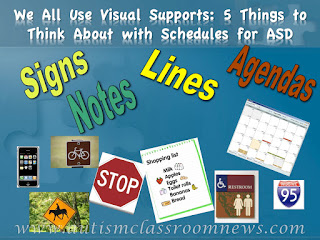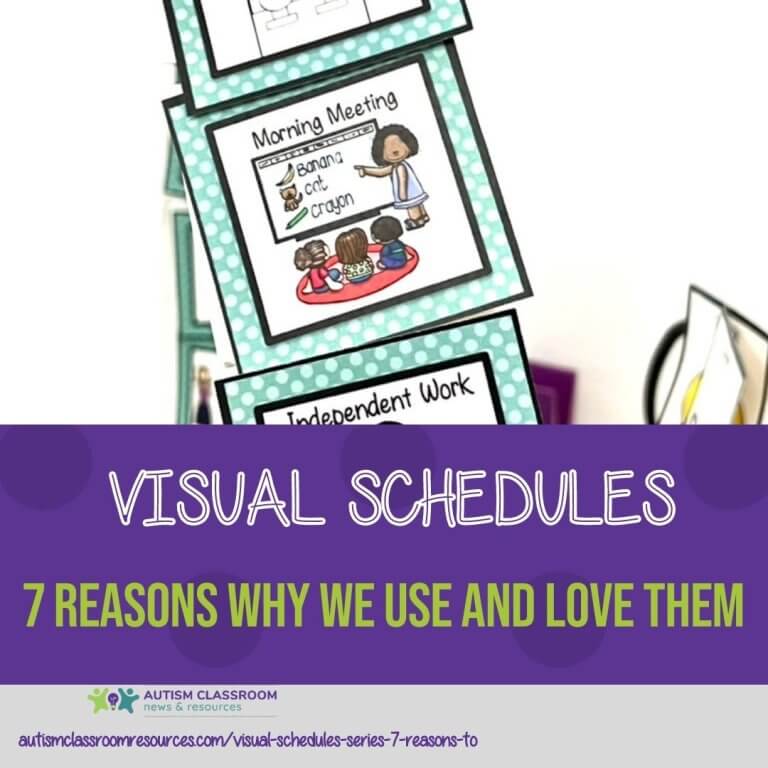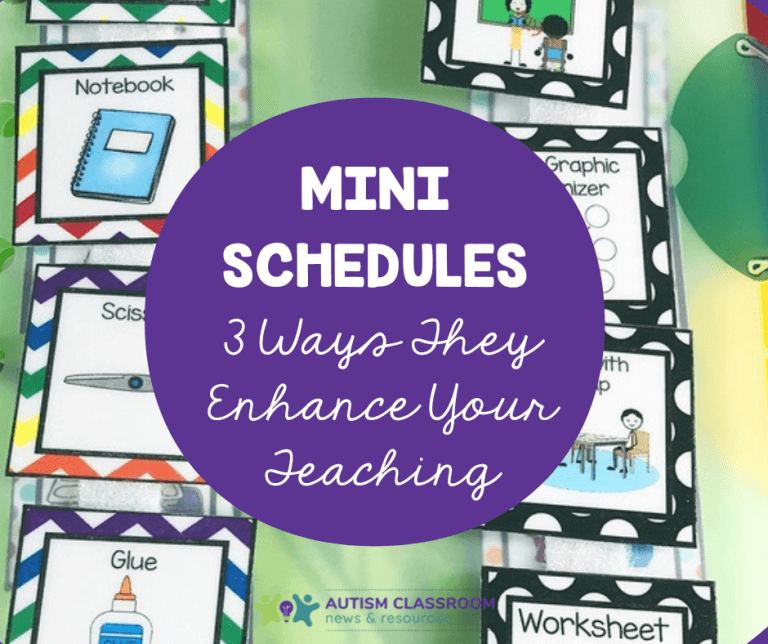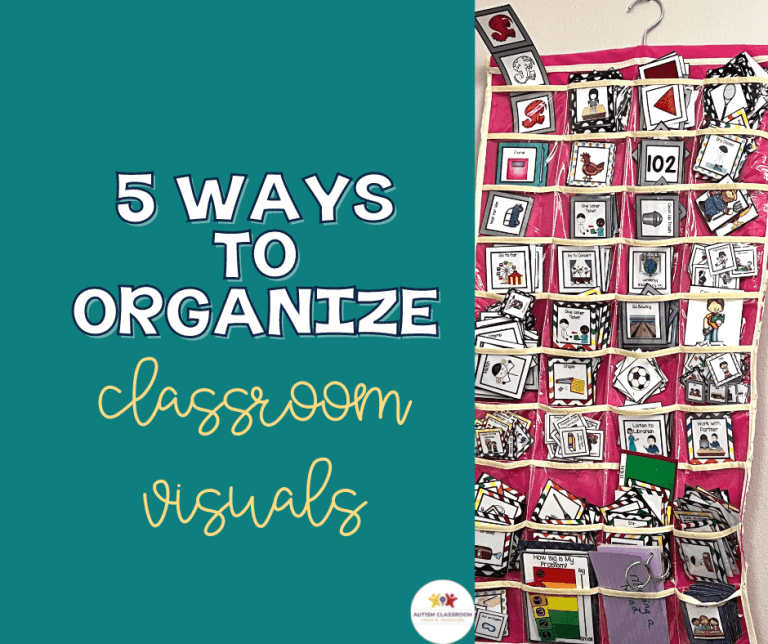Sharing is caring!
This is a continuation of a series about using visual schedules. The first post talks about the importance of schedules and why we use them and can be read here.
5 Things to Think About with Visual Schedules
- Everyone has a schedule of sorts. Do you use a calendar? Then you have a schedule a daily individual schedule. Do you have a to-do list? Then you have a mini-schedule. The difference between the types of schedules we use with students with autism is primarily in the form that the schedule takes. A student with autism may need the schedule broken down into smaller steps than we do. He or she may need a schedule for things that other students do as routine; but with a schedule he or she can do those same routines independently. A student with autism may need a picture schedule instead of a written schedule because his reading comprehension is not strong. But in the end, we all use schedules. We can make the schedule as “typical” looking as possible for the student…as long as it still works for him.
- Don’t sacrifice function for form–don’t change the schedule to something you think he should use only to find that he is no longer independent with it. Keep the schedule at a level that is easy for the student to use. For instance, don’t assume that he can use the same schedule as the class schedule. If you try it and find the student is continually seeking out information about what to do, he or she needs the individual schedule back. Also, don’t change the way the schedule is represented unless the student demonstrates that on his or her worst day, he can use it. I’ve seen lots of teachers change schedules from pictures to written schedules only to discover that a student’s can read it, but can’t comprehend it.
- Put more supports in place when the environment becomes more complex. We tend to create schedules that are used routinely in self-contained classrooms. However, many people make the assumption that if a child is able to operate in the general education environment, he needs fewer visual supports. This is actually the opposite of the case in most instances. In the general education classrooms, most students need MORE visual support, including schedules, than they would in a smaller, less distracting environment. To help this, I have created schedule supports for Music, Art, and PE (Specials) to help general education teachers use supports for students with autism. For more information about using visual schedules in specials, see this post for PE, this one for Music, and this one for Art.
- Schedules can be used across environments. If you use schedules with a student in your class, think about the types of schedules he or she could use at home. If he uses a visual schedule for the steps of the bathroom routine, consider making one to send home. If she can brush her teeth independently with a schedule, make a copy of the schedule to send home. However, keep in mind that school will always be more structured than home. Don’t expect families to schedule out their entire day. Some families work best this way, but most give up on schedules when they try to tackle them for a full day. Instead, families should think about a time of the day to add some structure to; start with just one routine, like the bedtime routine or the time when the parents are trying to get dinner on the table. Make a schedule for just that routine. When the child is independent at it that routine with the schedule, then choose another routine or time of day to try using a schedule.
- Schedules must be taught! I can’t understate how important it is to understand this. Many people think that if you put a schedule on the wall, problems will magically float away. If that was true, there would be far less to do in our classrooms. Schedules don’t solve problems. Learning to use the schedules allows students to be more independent. In order to begin to use them effectively, the have to be taught. I will post more on this later, but in the meantime, Carole Zangari has done a wonderful post at PrAACtical AAC on this topic that is worth checking out.
As we continue on this journey of investigating visual schedules, we will continue our exploration of the different types of schedules. Tomorrow I will talk about using first-then schedules and have a freebie planned, so stay tuned. In the meantime, below is a list of resources for making visuals to create schedules.
- Visual Aids for Learning
- PictureSET
- Do 2 Learn
- Tips and tricks for making and using visual supports
- Geneva Center Elearning visuals site downloadable printable tools










